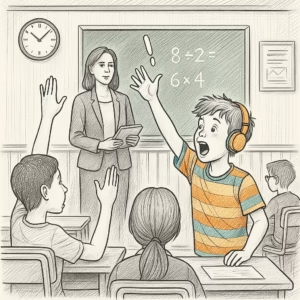Introduction
Transitioning between activities, whether in school, at home, or in the workplace, can be a significant challenge for individuals with ADHD. The shift from one task to another can cause delays, confusion, and even emotional distress. Understanding why transitions are difficult and implementing strategies to ease the process can help individuals navigate their daily routines more effectively.
Why Transitions Are Difficult for People with ADHD

People with ADHD often struggle with executive functioning skills, which include task initiation, working memory, and cognitive flexibility. This means that shifting focus from one subject to another or changing gears between activities requires more mental effort than it does for neurotypical individuals. Common difficulties include:
- Hyperfocus on a Current Task: Getting deeply engaged in an activity and finding it hard to stop.
- Task-Switching Fatigue: Feeling mentally drained when moving between different cognitive demands.
- Emotional Resistance to Change: Experiencing frustration or anxiety about leaving one task unfinished.
- Time Perception Issues: Underestimating or overestimating how long tasks will take, leading to scheduling conflicts.
The Impact of Transition Struggles in Education
In an educational setting, struggling with transitions can lead to:
- Delayed Start on New Tasks: Students may take longer to settle into new activities, causing them to fall behind.
- Incomplete Work: Difficulty wrapping up one assignment before moving on to the next.
- Classroom Disruptions: Increased frustration or outbursts when required to change tasks.
- Loss of Engagement: Avoidance of certain subjects due to repeated negative experiences with transitions.
Practical Strategies to Improve Transitions
1. Use Visual and Auditory Cues
Timers, alarms, and countdowns can help signal upcoming transitions. Visual schedules and colour-coded planners can also provide clear expectations.
2. Build in Transition Time
Rather than abrupt shifts, allow buffer time between tasks. Short breaks with structured activities (such as stretching or deep breathing) can help reset focus.
3. Provide Clear and Consistent Instructions
Teachers and parents can give step-by-step guidance to help students mentally prepare for the next activity. Using checklists and transition phrases (e.g., “In five minutes, we will…”) reduces uncertainty.
4. Establish Routine and Predictability
Keeping a structured schedule helps minimise resistance to change. If transitions happen at the same time each day, they become easier to manage.
5. Encourage Self-Monitoring Techniques
Teaching students to reflect on their transitions—such as using a journal or discussing their challenges—helps them develop personal strategies to improve over time.
Supporting ADHD Learners in the Classroom
Educators can take additional steps to make transitions smoother, such as:
- Assigning transition buddies to provide peer support.
- Using movement-based activities to shift focus.
- Allowing flexible timing for transitions to accommodate different needs.
Conclusion
Struggling with transitions is a common challenge for individuals with ADHD, but with the right strategies, these difficulties can be minimised. By creating supportive environments, using structured approaches, and encouraging self-awareness, parents and educators can help individuals develop smoother transitions in both school and everyday life.




